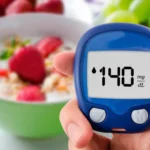Social media has become a defining feature of modern life. From scrolling through morning headlines to catching up with friends late at night, platforms like Instagram, TikTok, Twitter (X), and Facebook now shape how billions of people communicate, consume information, and even view themselves. Alongside the benefits of connection and expression, however, lies a more complex reality: the impact of social media on mental health.
Over the past decade, researchers have uncovered both positive and negative effects of social media use. On one hand, digital communities can offer support, reduce feelings of isolation, and spread awareness of mental health struggles. On the other hand, these platforms can amplify misinformation, encourage comparison, and fuel anxiety, depression, or self-esteem issues—particularly among younger users.
As we move through 2025, the conversation has shifted from whether social media affects mental health to how we can navigate it more responsibly. This means recognizing harmful content, developing healthy digital habits, and ensuring that credible voices rise above misleading claims. In this article, we explore the intersection of mental health and social media, how misinformation spreads, its consequences, and practical strategies for using these platforms to improve—not harm—our well-being.
The Dual Role of Social Media in Mental Health
Social media is not inherently good or bad—it is a tool. Its impact depends largely on how it is used, who is using it, and what kind of content dominates a user’s feed.
The Positive Side
- Connection and Support: Online communities can provide safe spaces for people who feel isolated in their offline lives. For individuals dealing with mental health conditions, support groups and awareness pages can offer validation and encouragement.
- Awareness and Advocacy: Social media campaigns have helped destigmatize mental health conversations globally. Hashtags like #MentalHealthAwareness and #EndTheStigma connect millions of users to resources and shared stories.
- Access to Resources: Organizations and mental health professionals use social platforms to share tips, helpline numbers, and coping strategies.
The Negative Side
- Comparison Culture: Constant exposure to curated images of success, beauty, and wealth can create unrealistic standards and fuel anxiety or depression.
- Addictive Use: The design of these platforms encourages prolonged engagement, sometimes at the cost of sleep, productivity, and real-world relationships.
- Misinformation: Perhaps the most concerning, misleading posts about mental health treatments, diagnoses, or wellness fads often spread faster than accurate, evidence-based information.
How Misinformation Spreads on Social Media
The digital age has made information more accessible than ever, but it has also blurred the lines between credible expertise and personal opinion.
Algorithmic Amplification
Social media algorithms prioritize engagement. Content that triggers emotional reactions—fear, outrage, or excitement—is more likely to be promoted, regardless of accuracy. This makes sensationalized misinformation particularly viral.
The Rise of “Wellness Influencers”
While many influencers genuinely want to help, some promote unverified remedies, supplements, or lifestyle hacks without scientific backing. Their content often looks polished and persuasive, making it difficult for viewers to distinguish fact from fiction.
Echo Chambers
Users often follow accounts that align with their beliefs. This can create “echo chambers,” where misinformation is reinforced by repeated exposure and lack of critical opposition.
Consequences of Misinformation
- Delayed or Incorrect Treatment: People may avoid professional help in favor of untested remedies.
- Stigma Reinforcement: False narratives about mental illness can worsen stereotypes.
- Emotional Harm: Exposure to extreme or misleading claims can heighten anxiety, especially among vulnerable populations.
The Psychological Impact of Social Media Use
Anxiety and Depression
Multiple studies link excessive social media use with higher rates of anxiety and depression. Factors include constant comparison, cyberbullying, and disrupted sleep patterns.
Body Image Issues
Platforms like Instagram and TikTok, which emphasize visuals, can foster body dissatisfaction. Filters and editing tools blur reality, making users feel inadequate compared to idealized images.
FOMO and Loneliness
The “fear of missing out” (FOMO) is a psychological phenomenon exacerbated by seeing peers constantly engaged in exciting activities. Paradoxically, this can increase feelings of loneliness and disconnection.
Positive Psychological Outcomes
On the flip side, balanced use of social media can reduce loneliness, especially for people who use it to maintain genuine relationships rather than for passive scrolling.
Strategies for Battling Misinformation
1. Verify Before You Share
Encourage users to fact-check posts using credible sources such as the CDC, WHO, or peer-reviewed journals.
2. Follow Trusted Voices
Seek out licensed mental health professionals, evidence-based organizations, and verified accounts. Platforms are beginning to highlight these voices more prominently.
3. Practice Critical Thinking
Ask: Who is posting this? What are their credentials? Are there references or citations? Is the content emotionally manipulative?
4. Report Harmful Content
Most platforms allow users to flag misinformation or dangerous advice. Using these tools can help reduce the spread of harmful posts.
5. Media Literacy Education
Schools and workplaces are beginning to integrate digital literacy into curriculums, teaching individuals how to evaluate sources and recognize misinformation.
Improving Mental Well-Being While Using Social Media
Set Boundaries on Screen Time
Spending hours scrolling can worsen stress and reduce time for restorative activities like exercise, hobbies, or face-to-face interactions. Setting daily limits or scheduling “offline hours” helps restore balance.
Curate Your Feed
Unfollow accounts that trigger comparison or negativity. Follow pages that uplift, educate, or inspire.
Engage Actively, Not Passively
Passive scrolling often leads to dissatisfaction. Instead, use social media to engage in meaningful conversations, comment thoughtfully, or share resources.
Use Digital Well-Being Tools
Most platforms now include built-in features that track screen time or suggest breaks. Leveraging these can support healthier habits.
Combine Online Support with Offline Care
Social media can be a great entry point into mental health conversations, but it should not replace therapy, medical treatment, or real-world social support.
Practical Tips for Healthier Social Media Habits
- Start Your Day Offline: Avoid checking social media in the first 30 minutes after waking. This prevents immediate comparison or stress.
- Schedule Check-Ins: Limit social media use to set times rather than constant scrolling.
- Create Content, Don’t Just Consume: Sharing your own thoughts or creative projects can feel more fulfilling than endless passive consumption.
- Be Honest About Your Triggers: If certain content worsens your mood, acknowledge it and take action.
- Prioritize Sleep: Avoid late-night scrolling, which disrupts circadian rhythms and worsens mental health.
The Role of Policy and Technology
Individual habits are crucial, but systemic change matters too. Platforms bear responsibility for reducing harm.
- Fact-Checking Partnerships: Collaborations with medical organizations to verify claims.
- Algorithm Adjustments: Prioritizing accuracy over engagement metrics.
- Transparency Measures: Labels indicating when content is sponsored or opinion-based.
- Accessible Resources: Links to crisis hotlines and therapy directories attached to mental health-related searches.
Frequently Asked Questions (FAQ)
Q1. Can social media use ever be “good” for mental health?
Yes, when used mindfully. Social media can provide connection, reduce loneliness, and spread awareness when users follow credible sources and set healthy boundaries.
Q2. How can I tell if a mental health claim online is misinformation?
Check the poster’s credentials, look for references to peer-reviewed studies, and compare the claim with reliable sources like Harvard Health or the NIH.
Q3. Does limiting social media time really improve mental health?
Studies show that reducing daily use to under 30–60 minutes improves mood, reduces loneliness, and increases productivity.
Q4. Are young people more vulnerable to social media’s negative effects?
Yes. Teenagers and young adults are particularly susceptible to comparison culture, body image concerns, and cyberbullying.
Q5. Should I delete my accounts if social media affects my mental health?
Not always. For some, setting strict boundaries or curating content is enough. For others, a break or permanent deletion may be best. It depends on individual circumstances.
Social media is not disappearing—it will remain a powerful force in shaping our interactions and understanding of the world. The challenge lies in using it wisely. While misinformation threatens to distort mental health conversations, users can take proactive steps: verifying sources, curating feeds, and balancing online interactions with offline well-being.
By treating social media as a tool rather than a constant companion, we can harness its benefits—connection, awareness, and support—without falling into its traps. In the end, improving mental health in the digital age isn’t about rejecting technology, but about learning to use it in ways that genuinely support our minds and our lives.





